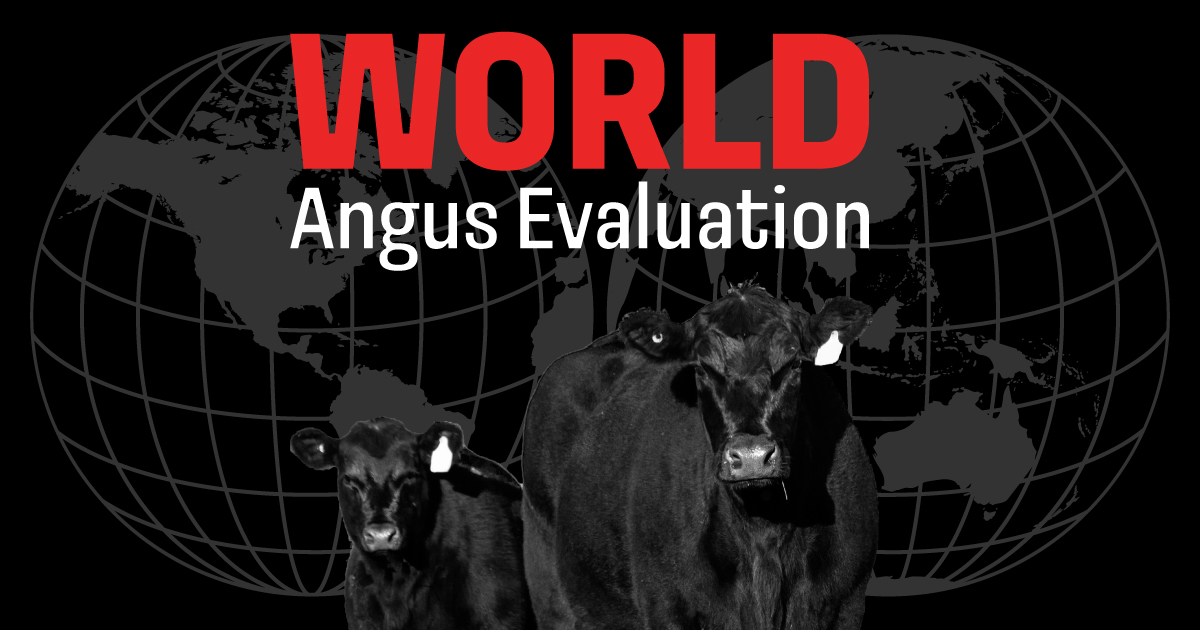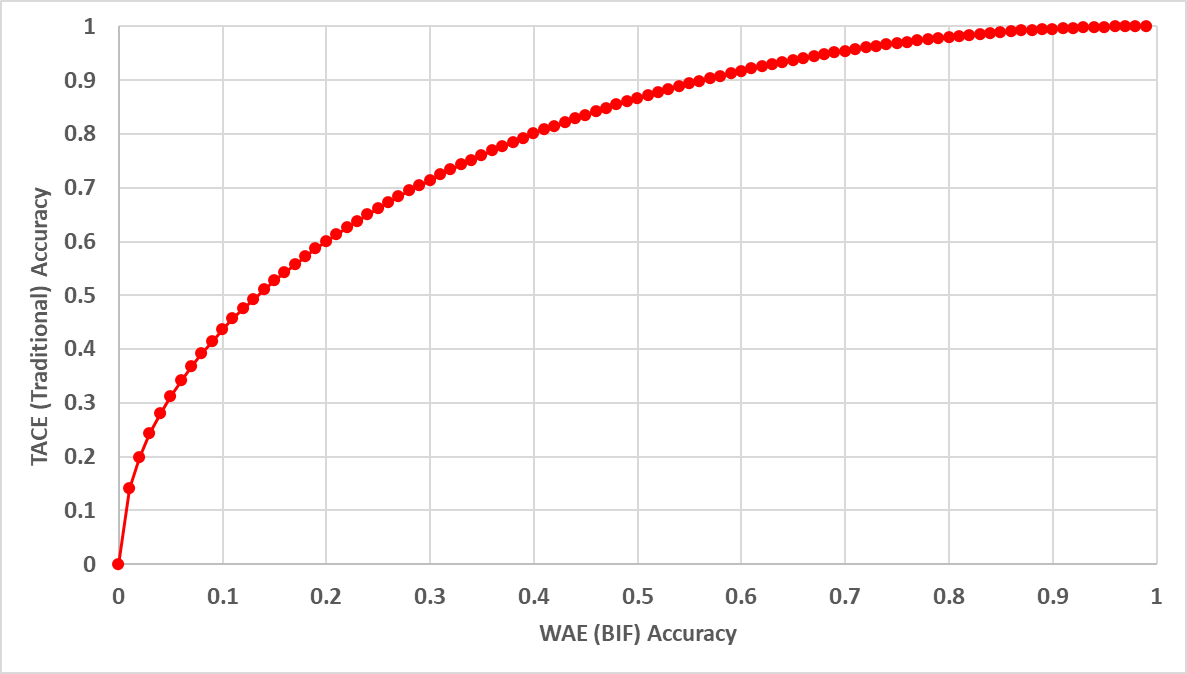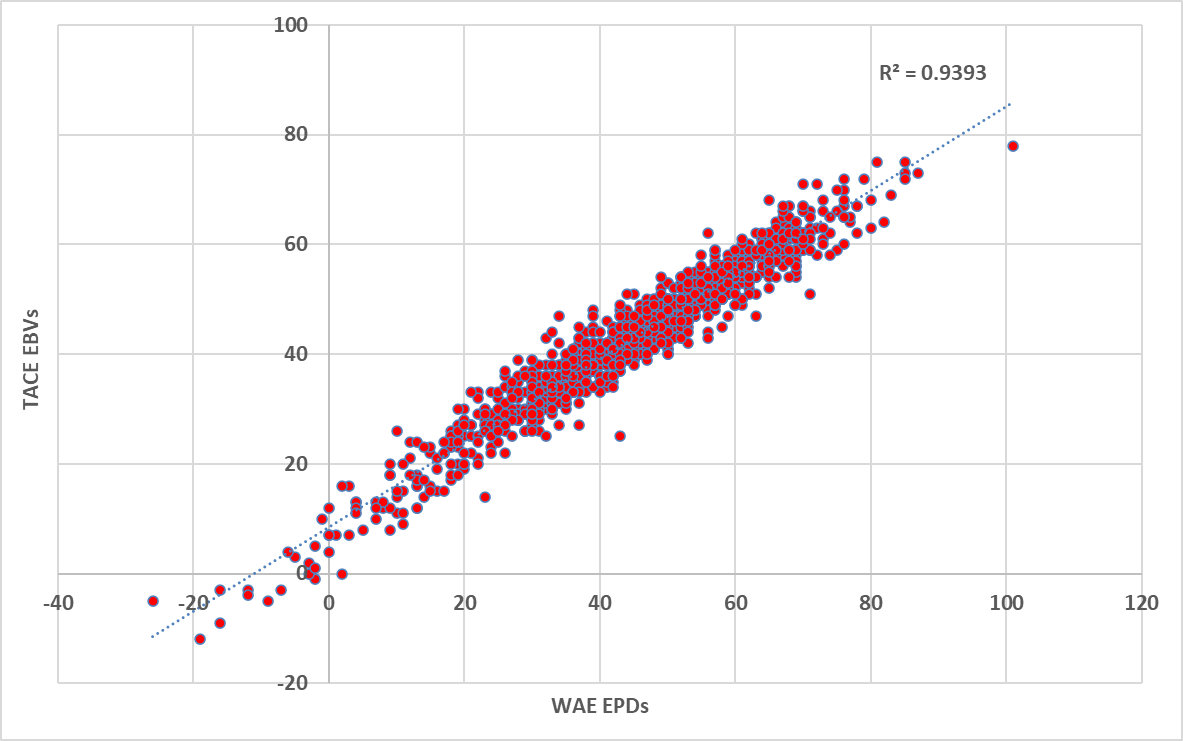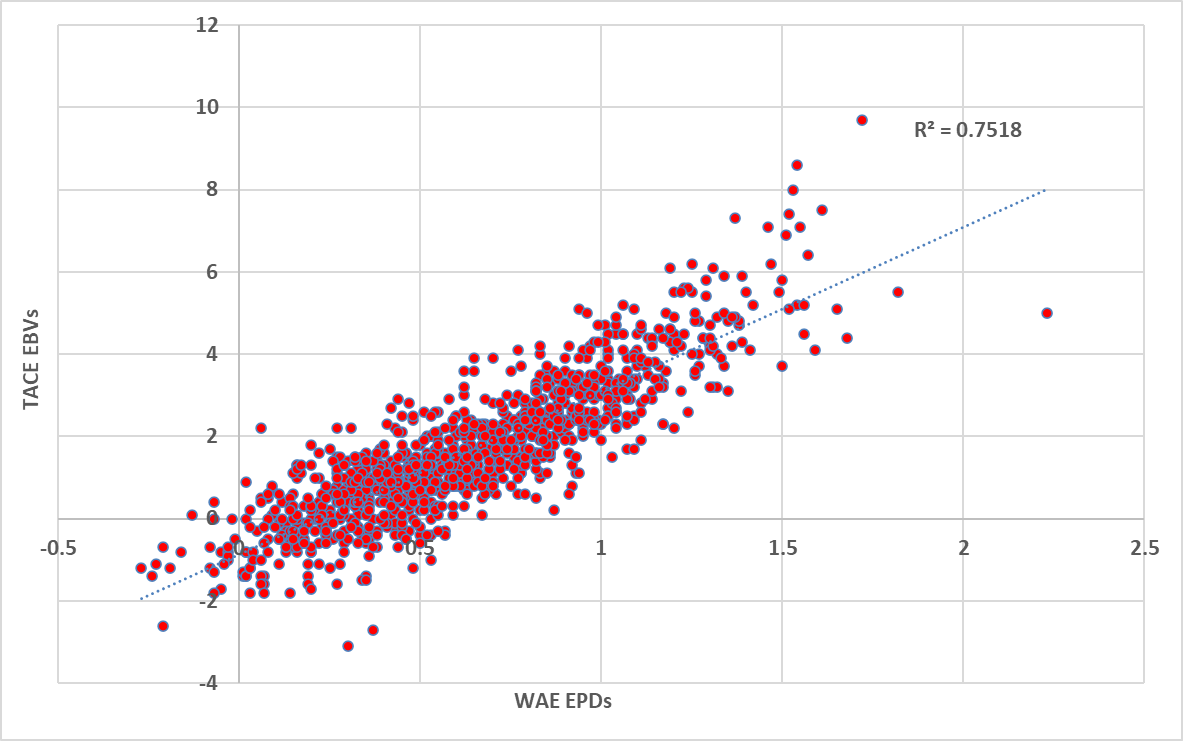Launch of the World Angus Evaluation


In conjunction with the American Angus Association® and the Canadian Angus Association, Angus Australia is excited to announce the launch of the World Angus Evaluation.
The World Angus Evaluation (WAE) is a globally focussed genetic analysis of Angus cattle. It combines data sources (phenotypes, genotypes and pedigree) from the American Angus Association, Canadian Angus Association and Angus Australia with the results being Expected Progeny Differences (EPD), which are similar to Estimated Breeding Values (EBV), for a specific list of traits on Angus sires.
The WAE is facilitated by Angus Genetics Incorporated (AGI), which is a subsidiary of the American Angus Association (AAA).
World Angus Evaluation Search Tool
WAE EPD results are accessible through an online sire benchmarking search tool. This search tool allows users to set EPD thresholds and other search criteria to directly compare sires from all three Angus Associations. Only sires will be listed on this site (i.e. no females or non-parent animals will be included at this time).
Sires will appear in the search facility based on the following criteria:
Following the initial release on October 14th, 2023, EPDs and sires will be updated in the search tool four times per year in the months of:
Please note:
To access the search tool, CLICK HERE
Learn how to use the online search tool
Background
In 2018 the World Angus Secretariat (WAS) discussed an initiative to pursue a global Angus evaluation. Following this, the American Angus Association, alongside Angus Genetics Incorporated (AGI), stepped up to explore this idea. What started as a WAS initiative quickly shifted to a strategic partnership among the three largest Angus Associations: The American Angus Association, Angus Australia and the Canadian Angus Association.
With this partnership in place, a multiple year research project was employed to understand the feasibility of a World Angus Evaluation. Multiple test evaluations and validation procedures were performed to ensure that phenotypes are compatible across databases, and that environmental differences such as age and contemporary groups are properly modelled.
An important step in the feasibility stage was to understand the relationship between animals across the three populations. To provide an effective evaluation, the populations must have overlap or links with each other through pedigree and genomic relationships.
Figure 1 represents the overlap in the populations based on the genotype of animals. This plot shows a large cluster of dots that represent individual animals from all three countries, which shows how closely the individual populations overlap. Individual colours, or countries are not clustered together by themselves, which supports that even though these animals have been in different herd books, and countries, the relationships among these animals are strong. This means the data being shared is valuable to inform genetic predictions of animals in differing countries.

The first major implementation step in describing global Angus genetics was released in 2019, when the three associations released a joint evaluation for both foot angle and claw set EPDs (or EBVs). This global collaboration was expanded with 11 additional traits on the 13th of October 2023.
Importantly, participating in the WAE ensure Angus Australia is meeting a strategic objective “to enable the genetic benchmarking of Australian and New Zealand animals, that are registered with Angus Australia, with other major Angus populations around the world”.
Angus Australia is participating in the WAE for the following reasons:
Additionally, the significant influence of North American genetics on the Angus Australia population is well understood. For example, in 2023, within the 20 most widely used sires with registered progeny (in 2023 and 2022), 10 were US bred sires. Out of the remaining 10 Australian bred sires, 6 were sons of US bred sires. This shows why participation in the WAE is important to allow more informed selection from the North American population.
Angus Australia have worked with AGI to set-up a pipeline that allows data (pedigree, phenotypes and genotypes) to flow seamlessly for inclusion in the WAE.
The data members collect and submit to Angus Australia for inclusion in TACE, will automatically be included in the WAE, if it meets specific criteria. These criteria are relatively broad so you should expect most data that is included in TACE, for the specified traits, to also be included in the WAE.
One exception being performance data on some crossbred or composite Angus animals (e.g. MBR recorded that are <75% Angus) that is analysed in TACE, cannot be included in the WAE, as it is calibrated for straightbred Angus only.
Angus Australia advises members to continue to record information (pedigree, genotypes and phenotypes) under the Angus Australia and TACE protocols (i.e. do not change recording practices to cater for the WAE).
There are thirteen EPDs published from the WAE covering calving ease, growth, carcase and structural soundness. The specific EPDs are:
Expected Progeny Difference (EPD) is the genetic prediction of how future progeny of each selection animal are expected to perform relative to the progeny of other animals. EPDs are expressed in units of measure for the trait, plus or minus. They are the usual language for genetic descriptions used in the North American beef industry.
EPDs are like Estimated Breeding Values (EBVs), in that they are estimates of genetic differences. However, EPDs focus on describing progeny differences, while EBVs focus on describing the genetic differences in the selection candidates (e.g. sires and dams). Simply, an EPD is half an EBV, all other things being equal.
The accuracy values calculated from the WAE are known as Beef Improvement Federation (BIF) accuracies. Like EPDs, BIF accuracies are the usual language for accuracies used in the North American beef industry.
Compared to the accuracy values we see from TACE (known as Traditional accuracy), BIF accuracies are generally lower, particularly for young animals, and are slower to increase in value as more data (e.g. own phenotypes, genotypes, progeny phenotypes etc) becomes available.
The difference in scale is simply a function of different methods to calculate the same thing. Like pounds compared to kilograms or inches compared to centimetres. For those more technically minded, this is further explained at Accuracy – BIF Guidelines Wiki (beefimprovement.org)
The relationship between TACE and BIF accuracies are shown in Figure 1. For example, BIF accuracy of 0.2 (20%) is equivalent to a TACE accuracy of 0.6 (60%).

You should expect sires to rank similarly, but not exactly the same when comparing WAE EPDs to TACE EBVs, for the same trait. This is a result of significantly more data (from North America) included in the WAE, along with some differences in the analysis models and trait definition (e.g. carcase traits are age adjusted in the WAE, but weight adjusted in TACE).
For example, for a sample group of Angus Sires with 200 or more progeny registered with Angus Australia (n=1062), the WAE EPD to TACE EBV correlations for Weaning Weight, and Marbling/IMF is 0.96 (figure 2) and 0.87 (figure 3) respectively.


WAE EPDs can be used similarly to TACE EBVs in selection. That is, to compare the genetics of sires for specific traits that are important to your breeding objective. This can be achieved by comparing the specific EPDs for two or more sires or comparing the EPDs of an individual to benchmark values like the WAE EPD average and percentiles table.
For example, sire A has a weaning EPD of +80 lb. and sire B has a weaning EPD of +50 lb. If you randomly mate these bulls in your herd, you can expect sire A’s calves to weigh, on average, 30 lb. more at weaning than sire B’s progeny (80 – 50 = 30).
Angus Australia strongly recommends that the TACE EBVs and Indexes remain the main focus point for every-day selection for Australian and New Zealand producers, as they are calibrated specifically for this region.
WAE EPD results are accessible through an online sire benchmarking search tool. This search tool allows users to set EPD thresholds and other search criteria to directly compare sires from the American Angus Association, Canadian Angus Association and Angus Australia. Only sires will be listed on this site (i.e. no females or non-parent animals will be included at this time).
Sires will appear in the search facility based on the following criteria:
Following the initial release on October 14th, 2023, sires will be updated in the search tool four times per year in the months of:
Please note:
To access the search tool, CLICK HERE.
For education resources on how to use the online search tool (COMING SOON).
YES. Angus Australia’s involvement in the WAE will not replace our bi-weekly TACE program. Regionally calibrated EBVs and Indexes from TACE will remain the focus point for every-day Angus selection by our Australian and New Zealand members.
Angus Genetics Inc. (AGI) and Angus Australia will continue to explore the feasibility for additional EPDs to be included in the WAE. If technically feasible (e.g. trait consistency, modelling), new EPDs will be added to the WAE.
It is also a possibility for other countries (e.g. other Angus Associations) to be included in the World Angus Evaluation. Suitable candidate Associations are those with well-established data pipelines with alignment of the traits and tools being used across countries.
WAE Resources and Further Information
World Angus Evaluation Education Centre Module
In conjunction with the release of the World Angus Evaluation, Angus Australia has released an Angus Education Centre Module, to help Angus Australia members further understand the Evaluation.